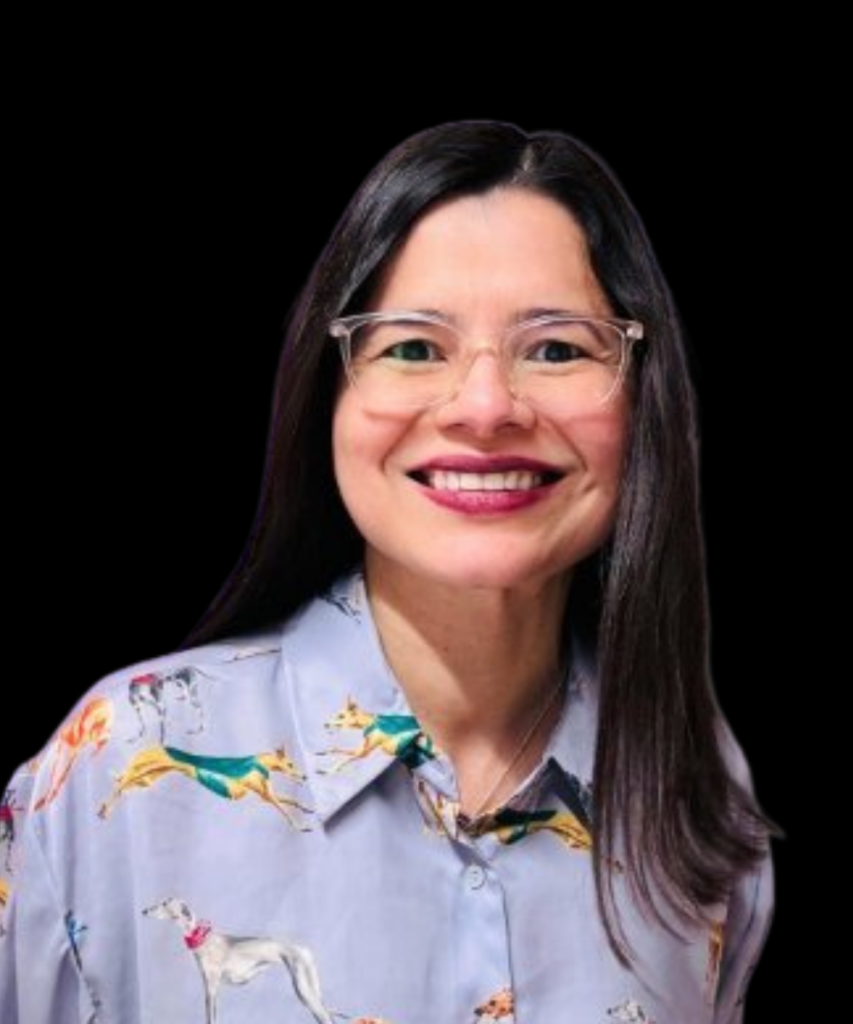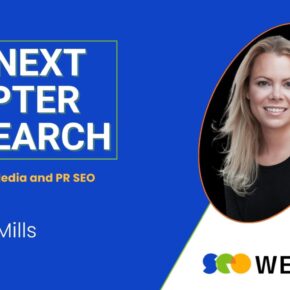
About Aleyda Solis
Aleyda Solis is an SEO consultant and founder of Orainti -a boutique SEO consultancy advising top brands worldwide-, speaker and author. She shares the latest news and resources in SEO in the SEOFOMO News, the SEOFOMO Newsletter and Digital Marketing in MarketingFOMO, organizes the SEOFOMO Meetup series, provides SEO tips in the Crawling Mondays video series, and a free SEO Learning Roadmap called LearningSEO.io.
Aleyda's SEO Week Session
- Title:The State of eCommerce SEO: How to Win in Today’s Products SERPs
- When to Watch: Day 3 | Wednesday April 30th | 10:45 am
- Session Abstract:
In this session, Aleyda will cover the current state of eCommerce SERPs and the latest SEO strategies driving online stores worldwide, based on survey insights and research across thousands of product queries in various verticals.
- Learn what’s generating actual clicks and conversions,
- What to avoid, and
- How to continue winning in an era where Google is evolving into a marketplace with AI-driven, personalized results
Transcript
Garrett: All right, welcome back to The Next Chapter of Search produced by SEO Week and iPullRank. Remember, if you haven’t already gotten your tickets, we’re talking about New York City, the end of April, the 28th to May 1st. It’s going to be dynamic four days of action-packed presentations from 35 of the most respected expert speakers all over the world. We’re international. We’re talking SEO, AI, data, content, and I am so excited to be joined today by the prolific, the one and only, she is Aleyda Solis, international SEO consultant and founder of Orainti, but she also does SEO FOMO, learningseo.io, so many different hubs across the internet where you can learn all about SEO. Thank you for joining me today, Aleyda. How are you doing?
Aleyda: Very, very good. And even better now talking with you. It’s always a pleasure, of course. Thank you very much for having me. And I am so very excited also for the SEO week. I cannot wait.
Garrett: It’s going to be, I mean, the lineup is just so many old familiar faces and a lot of new friends that are going to be coming and dropping knowledge. And these conversations are so hard. I’m like, before this, I’m like, we’re going to talk for 10 to 15 minutes. But when you and I start talking about SEO and what’s happening in our industry, it’s so hard to limit it. But I’m going to jump in. The state of SEO in a nutshell, where do we currently stand from your perspective?
Aleyda: It’s very exciting times. I believe that I haven’t lived through all of the changes and new things and areas to learn since I started in the industry, right? And which, like at that time, everything seemed new. Probably it wasn’t necessarily, but for me, right, because I was learning. Right now, every single week at this point, there is a new tool that allows you to assess your brand visibility in a lens, for example, or identify citation sources or another one that is a new SEO agent to support you for content optimization, for example. And it’s very exciting times, I believe, and allow us to, I think, that push for the level of sophistication that SEO really was already needing anyway, since way a long time ago. And potentially, since we have now a new competitor, a new platform that definitely shows the importance of it, we can realistically push it further.
But yes, these are 100% exciting times. And every new week with SEO FOMO, I’m like, oh my God, how do I summarize all of this? How I create like only the top 10? This is crazy. That is why I also started AI Marketers, the newsletter, where I only cover the AI application in marketing, which is pretty much, I have to say, like potentially 80% search, 20% content or something like that, pretty much. But yes, it’s crazy and it’s hectic indeed.
Garrett: Regardless, I mean, it’s SEO as an industry has matured so much and it really feels like it’s at the center of so many marketing activities. And that’s what you cover with AI Marketing and all the other different initiatives that you do. It makes it really ridiculous, especially with the daily changes we’re seeing like ecommerce, which has really been your bread and butter. And I was wondering, you’re going to kind of share so much of your insights into what’s happening with e-commerce in your presentation. Can you give us a preview as to like why someone should come and see what you’re going to share?
Aleyda: Yeah, indeed. And funnily enough, I think that this is a topic that has been very overlooked as a trend overall in the industry. But I mean, for those who work in ecommerce, I believe that we know it, right? A lot that Google has become already a marketplace. The SERPs, the template links, goodbye, and this is the industry, I believe that this is much more evident than many, many others.
And I have to say that this particular industry, and this is something that we were talking a bit about, I’m fairly sure that it’s not going to be displaced in any way anytime soon, but LLMs, just because of the type of information and integration and the product knowledge graph and merchant-centered data that Google has with so many retailers, online retailers, right? So for this sort of product-oriented, transactional, commercially-driven searches, I believe that Google will still be the platform even in the mid- to long term.
And then now the challenge for an SEO, for those who focus on the optimization of online sources, how I keep my visibility and click-through rate and click-share as high as possible and maximize the opportunities in this new reality in which, above the fold, we see a product pack. That whenever you click one of the 10 results, it’s a product knowledge panel. For many queries that just a couple of years ago, they were owned by the main category pages of major retailers and even brands, right? And a lot of brands also pretty much own the whole SERP. And now there’s much more diversity, which ultimately, I believe, is effectively positive for the ultimate consumer at the end of the day, too. But yes, how many pages that are ranked in the positions feature thumbnails and also many more image packs in the positions that are clickable and ultimately show you image tab results that connect with PDPs to a lot of carousels that are connected with user-generated content and video content and guides and reviews. So for those that think that, “Oh, I am doing e-commerce, I’m focusing on transactional categories, POP, PDPs, etc. I don’t want informational content. They don’t have visibility in the SERPs anymore.” Not at all.
So it’s pretty exciting, exciting times indeed also for e-commerce for different reasons than the general trend in SEO, I have to say. And my talk is going to be about that, how you keep up and identify the opportunities given your scenario. I am doing actually a survey right now through SEO FOMO, the SEO FOMO ecommerce survey to gather data and insights, not only from my own experience, but from the experience of all of SEO FOMOers out there based on what they are seeing in their ecommerce-related SERPs on one hand. And then I’m also doing a major study with a couple of SEO platforms out there to identify what is actually winning from an organic search visibility, clickability to traffic and the engagement that certain types of features tend to have across ecommerce, different ecommerce verticals, right? Again, AI overviews, the weight that these have and the importance of the role that these have in ecommerce is very, very different than from all the major industries too.
So it will be very refreshing, I believe, and interesting to go through it, to share insights, hard data, and then a little bit of more input feedback from the experiences across the industries and to pretty much have an overview of the state of e-commerce nowadays and what we can expect next based on this trend that we’re seeing and how we can do to win.
Garrett: I can’t wait. It’s so exciting and it’s so important to your point of like you, when you do such a good job of looking at the SERPs and identifying what is Google asking for? You did so much with like the PDPs and saying, when are those showing up? When are the images? And there’s so much opportunity for brands who are paying attention and not just doing the same things like, yes, the fundamentals of SEO will always exist, but you can zero in on – another big thing that you talk about is like the revenue metrics and what’s actually does lead to transactions, how you focus on it.
What is one specific tactic that you’ve been playing around with that someone can do right now for their ecommerce site that you think will be critical to their success?
Aleyda: There are a couple of things and it’s true that a lot of visibility is now going and traffic is going to PDPs and I’m going to cover that in a second, but a lot of brands and online stores, they follow this sort of rules to index, no index facets. And this is pretty static, many times. They did a keyword research back in the day and they saw that these sort of topics they don’t get as many searches per month. It’s not worth it to index them. They do have the product variety and offering to provide a good user experience to avoid cannibalizing, to avoid being flagged as not worthy to be indexed, but still they don’t index them just because back in the day that this validation, this analysis, so my recommendation will be refresh that. It’s like every, at least, at least every six months or so at the very least, you should be validating that because the search behavior of the user search changed a lot and the trends changed a lot and this is a really good proof and something that I have noticed and incentivize many clients to do so is just take a look at the Google sidebar, the filter sidebar for that is shown by Google now across so many product-related queries, which by the way, is also one of the, those elements that have been really detrimental in terms of click through rate for major head terms and have incentivized like the long tail for many of them.
Why? Because people start playing with the different filters and categories and the characteristics right there, right? Like, so if Google has that colors available there or sizes or that literally, why are you not yet at least testing to index this, these pages? If you do have the offering, right? “Oh, it’s because take a look, the only color that has more than a certain number of searches is black.” It’s like, “look, even if it is only black, let’s go ahead and test it, please. And let’s see the impact towards the conversion for those products because you will literally provide a much better experience, right?” That on one hand, so it’s the typical supply and demand type of thing that we like solve problem with it, right? But not, not necessarily. Just look at the SERPs and take a look at the opportunities there and what Google is highlighting already there. So there’s definitely that.
And the other thing is the level of granularity that we tend to index PDP with color variation sizes again at the PDP level. Why Google is incentivizing the last year, Google pretty much spend the last year incentivizing ecommerce to start using structured data to detailed variations of products. Why? Because they want to surface more specific product pages through their product packs and the product knowledge panel. And we need to help them. We need to help them to showcase us more. And the way to do that is to start indexing them better, differentiating them better. The characteristics should be clearly showcased, of course, in the metadata and the descriptions and the review should be specific for each Q&A and the images, of course, to avoid content duplication issues and cannibalization issues.
But then again, we can also now leverage also this structured data that Google has provided us to specify across them and make them easy, make them facilitate their lives to showcase us and surface our more specific PDPs much more prominently for those more long tail queries that we know that have started to grow more and more in the last few years. And it only continues to be growing. It’s much more conversational, the search behavior that we’re seeing for sure.
Garrett: Exactly. It’s such a good point and kind of leads into my next question, which is that this idea, if it’s almost future thinking, future proofing your content, where it’s like as search behavior changes because people realize that they can actually search for something super specific, like “running dad who hurt his back, who needs shoes to be able to run outdoors,” we’re going to see more queries like that. And if your content kind of speaks to that, you’re more likely at that long tail grainy level to show up. So, speculation time, what do you think the future of ecommerce SEO is going to look like over the next few years?
Aleyda: I believe that we are going to end up getting this AI assistant sort of layer at the top of Google for many product-related queries. We already sort of like have been hinted at that with many of the AI related features that Google has been releasing, especially for mobile. So, to try it on, to personalize the experience much more. And eventually I believe that, yeah, that can end up becoming like a full-fledged assistant. Some people will call it agent, very sophisticated way, very focused on providing like the ultimate retail sales, online retail sales assistant of sorts. So, I can definitely see that.
I truly believe that, well, you don’t only need real time data. We know that this data changes all the time with retailers, like the inventory, sales, etc., etc. Real time data that many LLMs not necessarily are able to get yet like that. But yes, Google does. So I believe that Google is the player in the best position to be able to provide that experience and they have been already testing that a lot. Also from a predictive search standpoint, I believe that we are going to see, based on our current behavior and historical behavior with Google, hopefully a more sophisticated and more accurate discover-like experience, but for shopping. So yes, Google has all the data and I can see them, they are building little by little that layer of providing that more personalized experience, full customer journey experience into selling and to not necessarily even leave their UI, their pages in order to complete the whole purchase process just until the very end. So, I can see it becoming that eventually. Let’s see if I am right. It’s exciting times, it can go either way, but my bet is it will tend to go that way.
Garrett: I feel like you clearly know what you’re talking about and, you know, whether Google kind of, because we hear this conversation in ecommerce of Google and Amazon being the competitors, like what role is Amazon playing? But I think that you’re so right of the experience is becoming more AI-oriented, whether Google gets involved in the transaction layer feels inevitable because that’s an opportunity for them to get more money.
If you want to have conversations with Aleyda and gab with us about the future of SEO, the next chapter in search e-commerce, please go get your ticket for SEO Week, April 28th, New York City. It is going to be so much fun. I can’t wait to talk to you more Aleyda. Thank you so much. I appreciate your time.
Aleyda: No, thank you very much. I’m very looking forward to seeing all of you at SEO week.
Garrett: Oh, and last thing, if you haven’t filled out her e-commerce survey, go find it on LinkedIn and make sure you fill out that because the data is fascinating.
Aleyda: It’s going to help us all that. That’s for sure.
Garrett: There you go. All right. See you all. We’ll see you soon.



